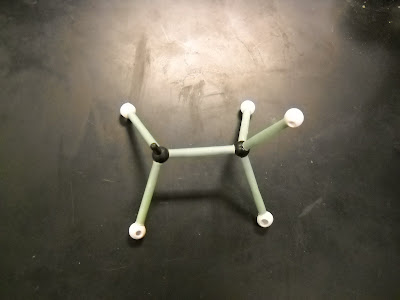Polarity and Molecular Shapes Lab.
Statement of the Problem: How are molecular shapes determined?
Objectives: Construct models of molecules. Next, determine molecular shapes. Then, predict polarity of molecules.
Materials:
Molecular model kit, and lab sheet.
Procedure:
1.) The first thing we did was draw each Lewis structure for the following formulas: CH4, BF3, C3H8, H2O, Si2H6,HF, CH3NH2, H2O2, N2, SeF4, C2H4,SiH2O, IF3,SF6,CO2, and SO3(2-). 2.) Next, we constructed each 3-dimensional figure. 3.)We then drew each figure onto the lab sheet, We used solid lines to represent bonds, dashed lines to point back to the plane of the paper, and wedged lines for bonds that point out from the plane toward the viewers. 4.) Finally we looked on our other lewis structure papers to find the shape, bond angle, and polarity & resonance of each structure.
Analysis:
1) Explain how water shape causes it to have polarity. 2) Describe how water’s properties would be different if the molecules were linear instead of bent. 3) Based on the results of this experiment, list the molecules from the experiment that would be water-soluble.
Results:





